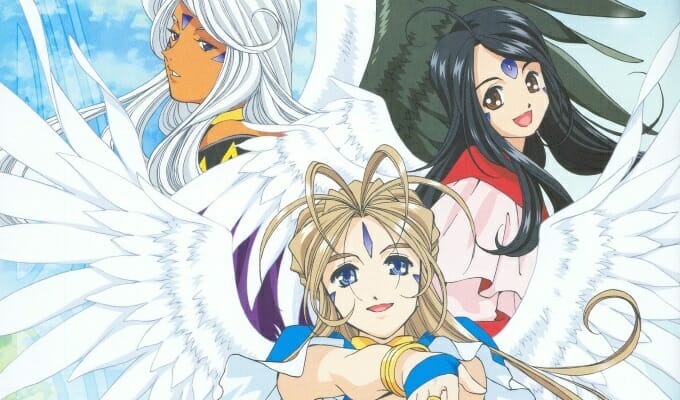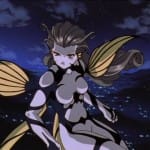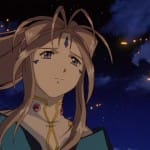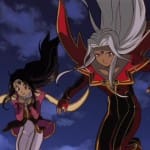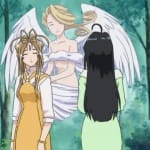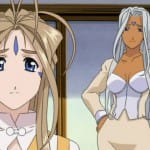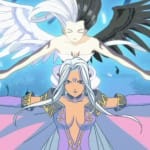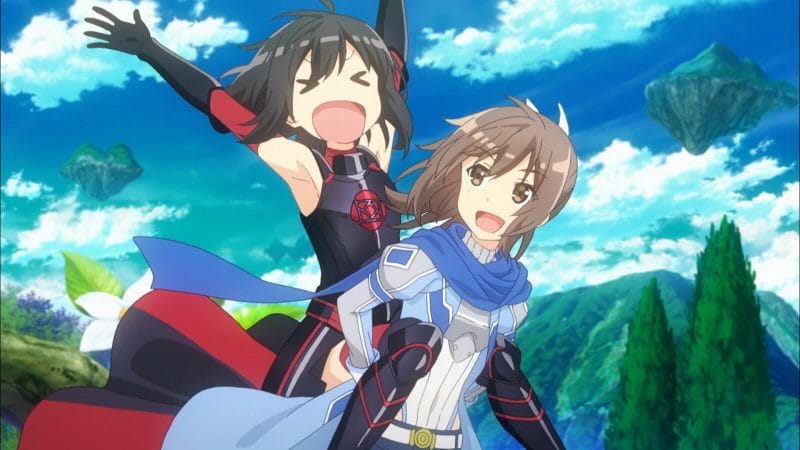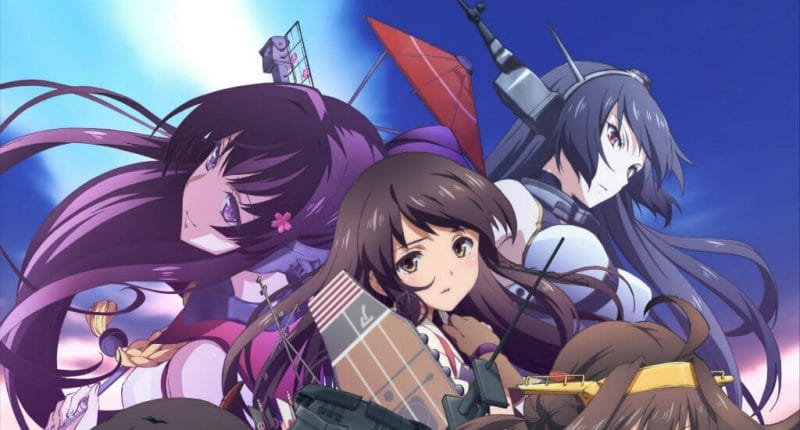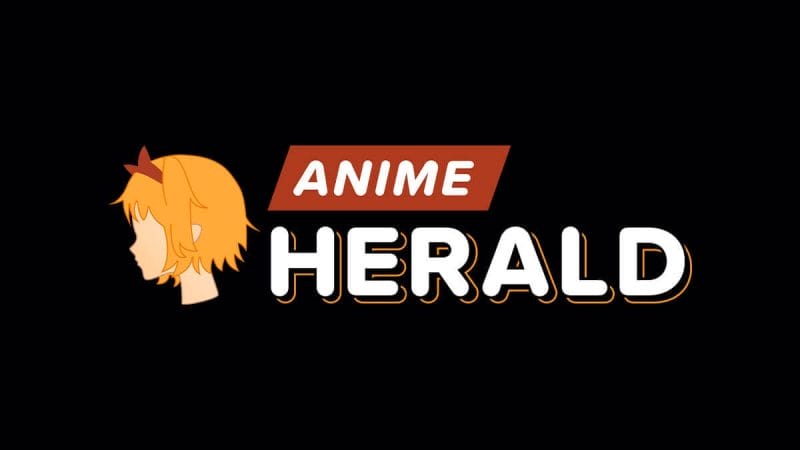In April, the final chapter of Kosuke Fujishima’s Ah! My Goddess was published in Afternoon magazine. After 25 years, 48 (and counting) collected volumes, and 308 chapters, it was finally over. The tale of Belldandy and Keiichi was complete, and it was time to say goodbye to the world that Fujishima had carefully crafted over the past quarter century.
Humble Beginnings
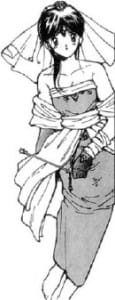 The world of Ah! My Goddess wasn’t one that bloomed overnight. Rather, it was born from Fujishima’s previous work, You’re Under Arrest. Specifically, the seeds were planted in a four-panel gag comic, which featured cast members from the series praying to the leading lady Miyuki, who was depicted as a goddess. Their prayers weren’t for love, money, or women. Rather, their only desire was to win the contest that was running in Morning Party Extra magazine.
The world of Ah! My Goddess wasn’t one that bloomed overnight. Rather, it was born from Fujishima’s previous work, You’re Under Arrest. Specifically, the seeds were planted in a four-panel gag comic, which featured cast members from the series praying to the leading lady Miyuki, who was depicted as a goddess. Their prayers weren’t for love, money, or women. Rather, their only desire was to win the contest that was running in Morning Party Extra magazine.
At least they set the bar low.
At that point, the seeds of curiosity were sown, and a generation-spanning franchise was beginning to form in the Fujishima’s head. He began to toy with the idea of why a goddess did what she did. In an interview in the February 1994 issue of Animerica (which was later re-published in the 2007 edition of Volume 4 of the Oh My Goddess! manga), when asked about his inspiration for the series, Fujishima replied:
I thought it might be an interesting idea if being a goddess was a job, an occupation. I based it on Norse mythology, which is relatively unknown in Japan.1
Of course, in translation to Japanese, a couple of names were changed. Verthandi, for example, became “Belldandy”.
The first chapter of Ah! My Goddess was published in Kodansha’s Afternoon magazine on September 24, 1988. This was no more than three weeks after Ranma 1/2 celebrated its first anniversary in Shonen Sunday.
The series began in a way that would seem utterly overdone and cliche by today’s standards. Hapless college student Keiichi gets stuck house-sitting at his college dorm. A misplaced call for take-out connects Keiichi to the Goddess Help Line, who dispatch a Goddess immediately. As in right now, through the mirror. The goddess introduces herself as Belldandy, and tells Keiichi that he’s entitled to one wish, for anything he desires. Keiichi, being a bit skeptical of the magical mirror maiden, delivers his wish: “I want a goddess like you to be with me always!”1
And, with that, Keiichi and Belldandy’s fates were sealed. The two, having been thrown from the men-only dorm to the streets, find refuge in an old temple. One thing leads to another, and the monk residing there leaves the two to care for the temple. It’s from there, that the couple’s new life begins. From that day, the two have to deal with Belldandy’s troublesome sisters, and threats from both this world and the realms of the supernatural.
It’s from this point, really, that the series was born. Countless endearing and beloved characters, from Belldandy’s sisters Urd and Skuld to the Keiichi’s goofy motor club buddies, were brought to life on the page. Whether it was Urd’s schemes to get Belldandy and Keiichi in bedded bliss, or the arrival of the mistress of Hell herself, excitement always seemed to lurk around the corner.
Onward, Anime Adaptations!
 Ah! My Goddess would go on to see a number of animated adaptations. Between 1993 and 1994, a five-episode OVA series was were produced by AIC. The series took a number of liberties with the actual plot to fit within the constraints of the format, but nevertheless managed to capture the very essence of the series.
Ah! My Goddess would go on to see a number of animated adaptations. Between 1993 and 1994, a five-episode OVA series was were produced by AIC. The series took a number of liberties with the actual plot to fit within the constraints of the format, but nevertheless managed to capture the very essence of the series.
AnimEigo originally licensed and released the series on VHS in 1995, where it quickly became a beloved classic. It became a flagship title for AnimEigo, joining the likes of Bubblegum Crisis, Urusei Yatsura. In 2010, though, AnimEigo announced that their license to the show expired. It hasn’t been released in the United States since.
The next adaptation of Ah! My Goddess wouldn’t come until April 1997, when Adventures of the Mini Goddesses hit the airwaves. This was a series of 48 shorts based on the Mini-Goddesses gag strips. These were goofy, light-hearted stories that shrunk Belldandy, Urd, and Skuld down to the size of a common rodent. And, well, most of the episodes involve the cast finding creative ways to make the life of one such rat, named Gan-chan, a living hell. Whether Urd’s marrying him off to a kettle, or Skuld’s sending to space, Gan-chan always suffers in the most humorous ways possible.
After Mini Goddesses left TV in 1999, the three sisters made their way to the silver screen. In 2000, Ah! My Goddess: The Movie was released to Japanese theaters. This was a stand-alone story, which revolved around Morgan le Fay, a fairy whose love was lost long ago, and fallen god Celestin. The two make their way to Earth, where Celestin reunites with his former student Belldandy. The reunion isn’t a happy one, as Celestin erases Belldandy’s memory of Keiichi, and begins to use her for his own machinations. It falls upon Keiichi, Urd, and Skuld to regain Belldandy’s lost memories, and return peace to the world.
The film opened to mixed reception, though. While the film was generally lauded for its art, animation, and music, it was a much darker experience than the original work and previous adaptations. The comedy was generally muted, and the stakes remained incredibly dire throughout.
Box office data for the film is nonexistent outside of Japan, sadly, so we don’t have an indicator of how well it actually performed. However, after Ah! My Goddess The Movie, the franchise became dormant in the anime world. It wouldn’t be until 2005, until the series would return in the form of a 50-episode TV series.
Ah! My Goddess TV was a return to form. It returned to the very beginning of the story, to tell a more faithful, more complete version of the early chapters of Fujishima’s manga. And, for the most part, it succeeds wonderfully. The same quirky, adorable charm that fueled the manga and the original OVA were back in full form. The series would cover (roughly) the first ten volumes of the original manga. Characters like Mara, Hild, and Peorth would be given their time to shine in animated form, and the key early arcs were presented in wonderful spectacles.
The two TV shows would be the last appearance of the franchise in English. Well… in animated form. Dark Horse continues to translate the manga, and they released the Oh My Goddess! First End novel in 2007. But I digress.
Since the TV series went off the air, Ah! My Goddess would go on to receive two more OVA series: Ah! My Goddess Fighting Wings and Ah! My Goddess: Itsumo Futari De. Fighting Wings was a two-episode series that revolved around Lind: a valkyrie, who was sent to deal with the Angel Eater, a beast that can rip an angel from its host goddess, causing a painful death to both.
Ah! My Goddess: Itsumo Futari De is a three-episode series that saw episodes released with special editions of volumes of the manga. These are stand-alone episodes, which really build upon the relationship between Keiichi and Belldandy, albeit with the usual hijinks scattered throughout.
Legacy
Ah! My Goddess was, and is, a highly influential series. It created, and established a number of tropes and common situations that are still used in anime titles today. It was a major player in the development of numerous popular character archetypes, from the beta-male protagonist with a heart of gold, to the Magical Girlfriend. Numerous elements of the modern harem shows were first introduced in the series, and many do regard it as one of the formative titles of the genre.
In Closing
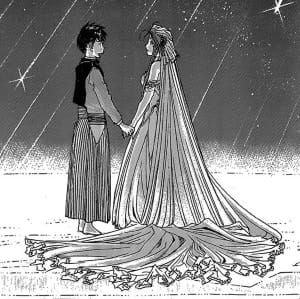 Ah! My Goddess closed as it began, with one sweet phrase that held infinite promise, and great sentimental value. To see it finally go end, to see Belldandy and Keiichi’s story finally come to a close is bittersweet, to say the least. Still, it’s been a hell of a run. It’s one that I’m thrilled to have been a part of.
Ah! My Goddess closed as it began, with one sweet phrase that held infinite promise, and great sentimental value. To see it finally go end, to see Belldandy and Keiichi’s story finally come to a close is bittersweet, to say the least. Still, it’s been a hell of a run. It’s one that I’m thrilled to have been a part of.
This is a series that was able to span generations, and really work its way into the very fabric of fans young and old. Its contributions to anime and manga are countless, and there will undoubtedly be many more that will look to the work as an influence going forward.
Kosuke Fujishima did what so many authors, so many creators have set out to do, but utterly failed. He created a world, brimming with personality and with charm, and filled with amazing characters. Everybody had a story that was told only to the audience, and every conflict was more than just “good vs. evil.” It was fun, it was touching, and it always found a way to just tug at the heartstrings, even if it was just a tiny bit.
Fujishima created something truly special with Ah! My Goddess. Here’s hoping he can continue to amaze us with his next work.
References
1:
Fujishima, Kosuke, Dana Lewis, Alan Gleason, Toren Smith, and Susie Lee. Oh My Goddess!. 1997. Reprint. Milwaukie, OR: Dark Horse Manga, 2007. Print.
2:
Fujishima, Kosuke, Dana Lewis, Alan Gleason, Toren Smith, and Susie Lee. Oh My Goddess!. 1996. Reprint. Milwaukie, OR: Dark Horse Manga, 2005. Print.


